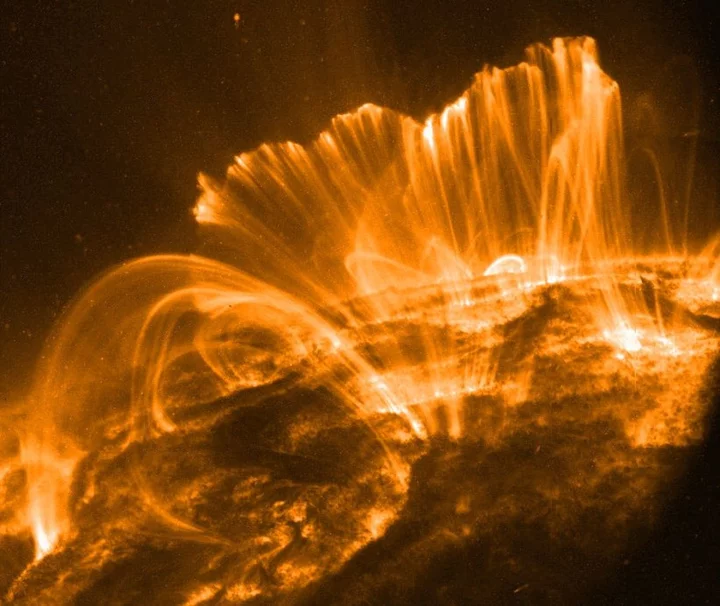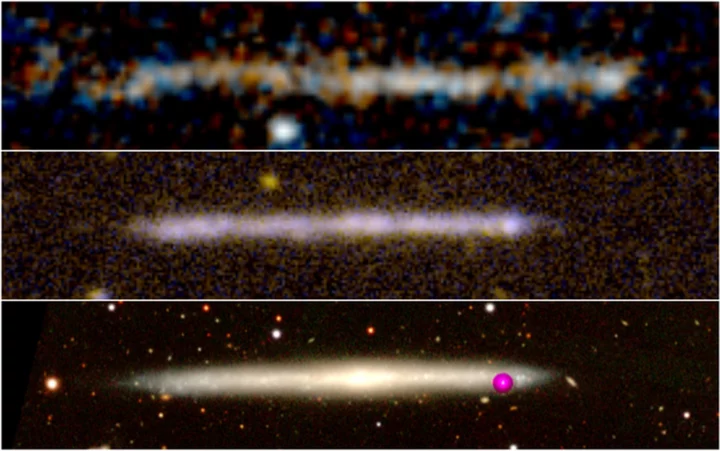
Guillermo Lasso: Ecuadorean president's impeachment trial set to start
President Guillermo Lasso is accused of embezzlement, but he says the allegations are politically motivated.
1970-01-01 08:00

Twitter wrong to block tweets during Turkey election - Wikipedia founder
The founder of Wikipedia said Twitter should not have complied with the Turkish government's demands.
1970-01-01 08:00

Ranking the top 25 players in the WNBA for the 2023 season
The 2023 WNBA season is finally here and we're ranking the top 25 players in the league before all the action gets started.The WNBA’s 2023 season tips off later this week. Super teams, a new batch of rookies, and multiple coaching changes have already set the tone for what is to come....
1970-01-01 08:00

Turkey's soft-spoken Kemal Kilicdaroglu takes on powerful Erdogan
Kemal Kilicdaroglu has mounted the strongest election challenge to Turkey's leader so far.
1970-01-01 08:00

SpaceX hires former NASA human spaceflight chief for Starship role
By Joey Roulette WASHINGTON Elon Musk's SpaceX has tapped NASA's former human spaceflight boss Kathy Lueders to help
1970-01-01 08:00

Nasa’s new AI gives ‘30 minutes of advance warning’ before killer solar superstorms strike Earth
Nasa has built an artificial intelligence model to predict where on Earth an impending solar storm would strike, a new system that scientists said can provide “30 minutes of advance warning”. The AI model analyses Nasa satellite data to raise the alarm on dangerous space weather, said researchers from the American space agency’s Goddard Space Center. The warning may provide just enough time for countries to prevent severe impacts of these storms on power grids and other critical infrastructure, according to the new study published recently in the journal Space Weather. Solar storms are caused when the Sun emits a burst of electrically charged plasma in what is called a coronal mass ejection. These charged particles create so-called geomagnetic storms that may cause blackouts and technological malfunctions of instruments on Earth as they interfere with the protective magnetic field around the planet. While these storms range from mild to extreme, their effects could become increasingly disruptive in a technologically dependent world. For instance, a solar storm in 1989 caused blackouts across Quebec, Canada for 12 hours, plunging millions into the dark and closing schools and businesses. Another popular solar superstorm event known as the Carrington Event sparked fires at early telegraph stations in 1859 that prevented messages from being sent. Scientists warned that the risk of such a devastating solar storm is increasing as we approach the next “solar maximum” – a peak in the Sun’s 11-year activity cycle. To prevent such a devastation, Nasa scientists developed the new AI model to identify links between solar wind measurements from previous Sun missions and geomagnetic disturbances observed at ground stations across Earth. The computer model they developed, called DAGGER, can quickly and accurately predict geomagnetic disturbances worldwide, “30 minutes before they occur,” researchers said. When they tested the model against two geomagnetic storms that happened in August 2011 and March 2015, it was able to “quickly and accurately” forecast the storm’s impacts around the world. The new prediction system is the first to combine swift analysis of AI, with real measurements from space and across Earth to generate frequently updated predictions. Scientists believe the early warning provided by the system can help take action to protect infrastructure from an impending solar storm, such as temporarily taking sensitive systems offline or moving satellites to different orbits. Read More Stunning aurora lights up skies over Australia: ‘Brightest one I’ve ever seen’ How a severe solar storm could leave a lasting impact on our world The world is not yet ready to overcome a once-in-a-century solar superstorm, warn scientists Astronomers find ‘objects that no one has ever seen before’ Saturn’s rings are no more than 400 million years old – study Strange sounds recorded by balloons in stratosphere leave scientists puzzled
1970-01-01 08:00

‘Runaway supermassive black hole’ mystery solved: Scientists find new explanation for unusual star structure
Scientists think they have found an explanation for what scientists thought was a “runaway” black hole speeding through the universe. Last month, scientists reported that they had seen what appeared to be an object unlike anything seen before. What originally appeared to be scratches on Hubble images was actually a black hole that had been thrown out from its home galaxy and was now speeding through the cosmos, scientists said. Astronomers had come to that conclusion after spotting a long trail of stars, formed 8 billion years ago. It was a stretched out, narrow shape, roughly the same size as our own Milky Way. Last month’s study suggested that those stars were the wake left behind from that runaway black hole. As the black hole travelled through a gas cloud, it left behind the right conditions to start forming stars, that study suggested. It was shock and a breakthrough for a number of reasons: it was unprecedented, and required a number of different conditions for it to be true. That led astronomers both to celebrate and question the theory, and in the time since other researchers have been working on their own ideas. Now scientists at the Instituto de Astrofísica de Canarias (IAC) have suggested their own, more ordinary explanation of the unusual, long star structure. They suggest that it is in fact just a flat or thin galaxy – one without a bulge that makes it wider – that is being seen from its side. “The motions, the size, and the quantity of stars fits what has been seen in galaxies within the local universe,” said Jorge Sanchez Almeida, an IAC researcher who is the first author of the article, in a statement. “It’s a relief to have found the solution to this mystery, the new proposed scenario is much simpler. In one sense it is also a pity, because the existence of fleeing black holes is expected, and this could have been the first one to be observed.” The team compared the mystery structure with another, much better known galaxy, named IC5249. That is near to us, has a similar mass of stars, and doesn’t have a galaxy either. They found that it was surprisingly similar. The stars were moving in similar ways to those found in closer, comparative galaxies, researchers said. That led scientists working on the new paper to suggest that it is a relatively normal and expected galaxy, rather than an out-of-control black hole. But they hope that further observations will shed further light on what exactly it is doing – and could still allow the galaxy to prove of interest to astronomers. “We also looked at the relation between the mass of the assumed galaxy and its maximum velocity of rotation, and discovered that indeed it is a galaxy which behaves like a galaxy,” said Ignacio Trujillo, an IAC researcher who worked on the study. “It is an interesting object, because it is quite a large galaxy at a very large distance from Earth, where the majority of the galaxies are smaller.” The proposal is reported in a paper, ‘Supermassive black hole wake or bulgeless edge-on galaxy?’, published in the journal Astronomy and Astrophysics. Read More Aliens may intercept human communication ‘within next 100 years’, study says Powerful auroras likely this week due to rare ‘backward’ sunspot Meteorite crashes through roof of New Jersey home Aliens may intercept human communication ‘within next 100 years’, study says Powerful auroras likely this week due to rare ‘backward’ sunspot Meteorite crashes through roof of New Jersey home
1970-01-01 08:00

Three Adani Firms Lose Endorsement of UN-Backed Climate Group
Three Adani Group companies, including Adani Green Energy Ltd., have lost their endorsement from the world’s leading arbiter
1970-01-01 08:00

It's championship or bust for the New York Liberty and Las Vegas Aces
The New York Liberty and the Las Vegas Aces have built historically talented rosters. The WNBA's two superteams are must-see TV.In October of this year, (at least) one of these statements is going to be true: the New York Liberty are not WNBA champions; the Las Vegas Aces are not WNBA champ...
1970-01-01 08:00

Women's race organizers apologize after food processor prize sparks sexism accusation
The organizers of a women's running race in Spain have apologized after they were accused of sexism for giving the winner a food processor as a prize.
1970-01-01 08:00

Mark Zuckerberg Went Beast Mode in His First Jiu-Jitsu Match
Video of Mark Zuckerberg's first jiu-jitsu fight.
1970-01-01 08:00

Michelin-star meals on the edge of space offered for $130,000
French space tourism venture Zephalto hopes to send travelers some 25 kilometers (about 15.5 miles) above Earth, where they'll be wined and dined with incredible views of the Earth from up high.
1970-01-01 08:00
